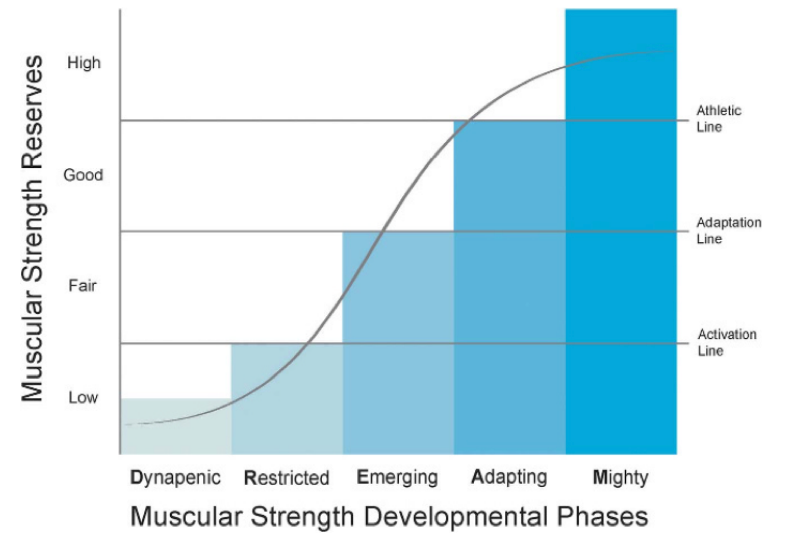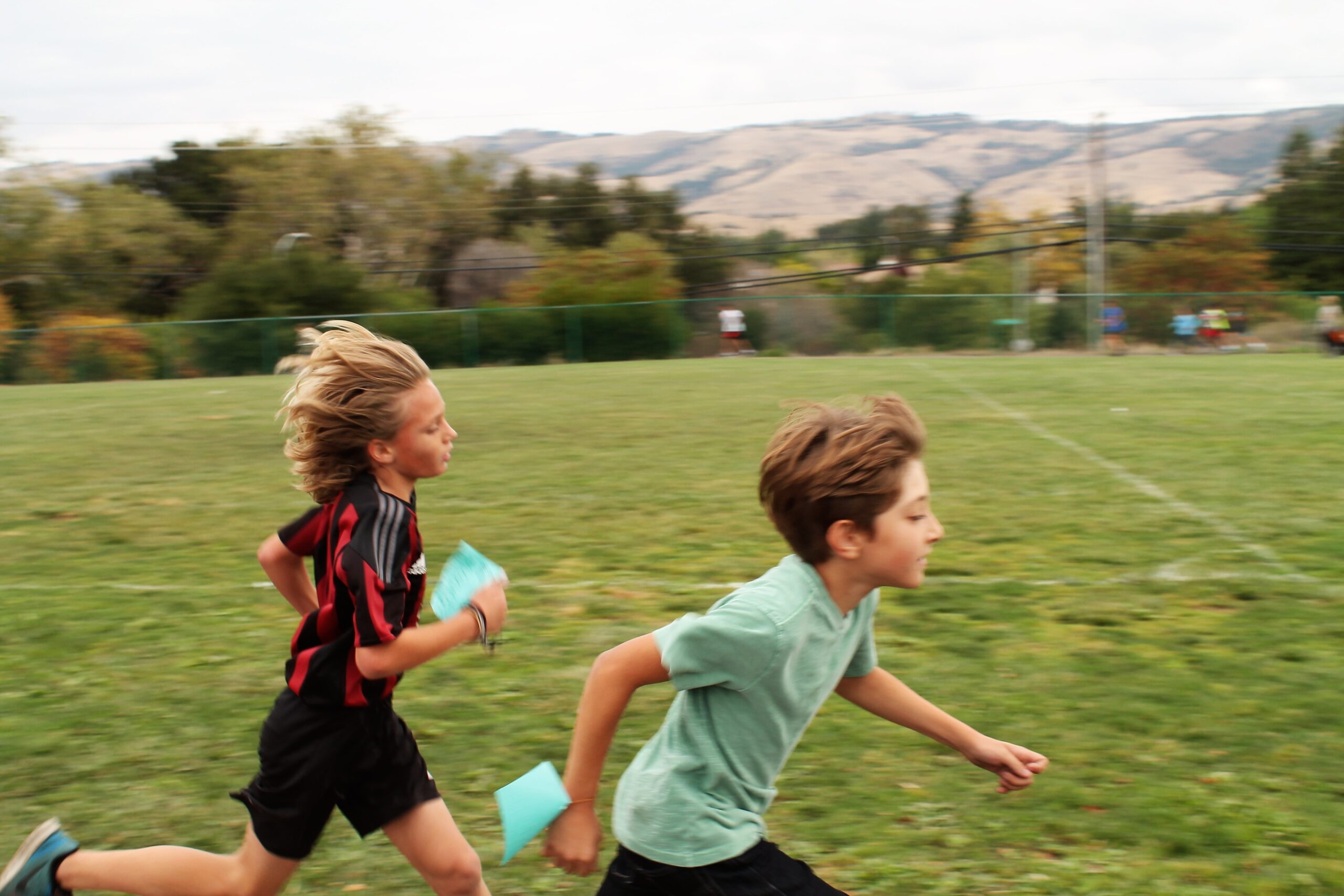Are young athletes strong enough for sport?
Modern day youth have been shown to be weaker than their previous generations. (Please refer to Blog #…). Just playing sports will not ensure that youth will reach a particular level of muscular strength that will optimize performance, reduce injury risk, and improve health. It’s likely that the gap between strong and weak youth will keep increasing over time unless these deficits are addressed.
A strength reserve is needed to enhance neuromuscular fitness, improve athletic performance, reduce sport injury risk, and create healthy, strong youth.
Specific numbers aren’t available across all sports, however in elite youth soccer players with resistance training experience it’s suggested that relative strength levels for a back squat should range from 0.7x body mass for 11-12-year-olds, 1.5x body mass for 13-15-year-olds, and 2.0x body mass for 16-19-year-olds.
The DREAM model:
This model shows the 5 developmental phases of muscular strength development and the importance of building and maintaining muscular strength reserves
- Dynapenic: Characterised by abnormally low levels of muscular strength that limit a child’s ability to perform activities of daily living such as climbing stairs
- Reduced: When weak children get stronger by participating in general physical activity they enter this phase of the model as they begin to move and play.
- Emerging: This phase shows remarkable gains in muscular strength as they gain confidence and competence in their abilities to activate specific muscle and lift heavier loads by regularly participating in structured resistance training.
- Adapting: Increases in the youth’s strength translate to observable improvements in power and speed development.
- Mighty: Youth in this stage have a high-level muscular strength reserve, enhanced athletic abilities, and reduced risk of sports related injuries.

Faigenbaum, A. D., MacDonald, J. P., & Haff, G. G. (2019). Are young athletes strong enough for sport? DREAM on. Current sports medicine reports, 18(1), 6-8.

